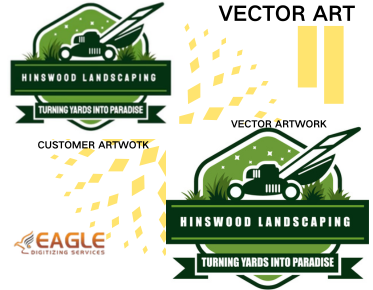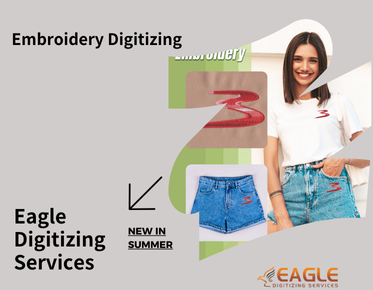Find Your Perfect Vector Tracing Partner
The Importance of Vector Tracing
Why Convert Raster to Vector?
Converting raster images to vector format, known as vector tracing, is essential for enhancing scalability and flexibility. Vector graphics offer precision and adaptability, which are crucial for professional design work. They allow for seamless resizing without compromising quality, ensuring designs remain sharp and clear across different mediums.
Benefits of Vector Graphics
Vector graphics boast several advantages. They are resolution-independent, ensuring high quality at any size. They also have smaller file sizes compared to high-resolution raster images, making them easier to store and share. Additionally, vector files are editable, allowing designers to tweak elements without starting from scratch.
Common Uses for Vector Graphics
Vector graphics are ubiquitous in professional design. They are used for logos, icons, illustrations, technical drawings, and more. Their scalability makes them ideal for both digital and print media, ensuring consistent quality from business cards to billboards.
When to Use a Professional Raster to Vector Tracing Service
DIY vs. Professional Services
While DIY vector tracing tools are available, they often fall short in accuracy and detail. Professional services, however, provide precision and expertise, handling complex images with ease. For high-stakes projects, professional intervention ensures superior results.
Situations Requiring Professional Expertise
Complex images with intricate details, such as logos and technical drawings, benefit greatly from professional tracing. Professionals can handle nuances and subtleties that automated tools might miss, ensuring a faithful and high-quality vector representation.
Quality and Precision in Professional Services
Professional tracing services guarantee meticulous attention to detail and high-quality output. Experts use advanced software and techniques to ensure every element of the raster image is accurately converted, resulting in a flawless vector graphic.
Key Features of a Professional Raster to Vector Tracing Service
Accuracy and Attention to Detail
A top-tier tracing service prioritizes precision, ensuring each line, curve, and color is accurately represented. This attention to detail is crucial for maintaining the integrity of the original design.
Customization Options
Professional services often offer customization, allowing clients to specify particular aspects of the conversion, such as line thickness and color adjustments. This ensures the final vector graphic meets specific requirements and preferences.
Quick Turnaround Times
Efficiency is key in professional services. Reliable providers offer quick turnaround times, meeting tight deadlines without compromising on quality. This is especially critical for initiatives with strict deadlines.
How to Evaluate Raster to Vector Tracing Services
Assessing Portfolio and Previous Work
Evaluating a provider's portfolio is essential. Reviewing previous work helps gauge their expertise and style, ensuring they can deliver the desired quality. Look for diversity in their projects to understand their range of capabilities.
Reading Client Reviews and Testimonials
Client reviews offer insights into service quality and customer satisfaction. Positive testimonials indicate reliability and professionalism, providing peace of mind when choosing a provider.
Comparing Pricing and Packages
Pricing is a critical factor. Compare packages to understand what is included and ensure it aligns with your budget and needs. Transparent pricing without hidden costs is a hallmark of a trustworthy service.
Where to Find Reliable Raster to Vector Tracing Services
Online Marketplaces and Freelance Platforms
Platforms like Fiverr and Upwork host numerous freelancers specializing in vector tracing. These platforms offer a wide range of services at varying price points, making it easy to find a suitable provider.
Specialized Graphic Design Agencies
For more complex or high-stakes projects, specialized graphic design agencies offer professional vector tracing services. These agencies have experienced teams and advanced tools to handle detailed work.
Recommendations from Industry Peers
Industry peers can provide valuable recommendations. Colleagues or fellow designers who have previously used tracing services can offer insights and referrals, helping you find reliable providers.
Top Online Platforms for Raster to Vector Tracing Services
Fiverr: Affordable and Diverse Options
Fiverr is known for its affordability and diverse range of freelancers. It’s an excellent platform for finding budget-friendly vector tracing services with varying levels of expertise.
Upwork: Finding Experienced Freelancers
Upwork offers a more curated selection of freelancers, with detailed profiles and client reviews. It’s ideal for finding experienced professionals capable of handling complex tracing projects.
99designs: High-Quality Design Contests
99designs operates on a contest model, allowing you to choose from multiple designs submitted by various freelancers. This ensures high-quality results and offers a range of creative solutions.
Choosing the Right Service Provider
Matching Expertise to Your Project Needs
Ensure the provider’s expertise aligns with your project requirements. For example, if you need a logo traced, choose a provider with a strong portfolio in logo design and tracing.
Understanding the Provider’s Process
Familiarize yourself with the provider’s process, from initial consultation to final delivery. This transparency helps set clear expectations and ensures smooth collaboration.
Communication and Support Considerations
Effective communication is crucial. Choose a provider who offers clear and timely communication, and is willing to provide support and updates throughout the project.
What to Expect During the Raster to Vector Conversion Process
Initial Consultation and Requirements Gathering
The process typically begins with an initial consultation to understand your requirements. This includes discussing the image details, desired outcomes, and any specific instructions.
Steps Involved in the Tracing Process
The tracing process involves converting the raster image into vector format using advanced software. Professionals meticulously outline each element to ensure accuracy and quality.
Reviewing and Approving the Final Vector
After the conversion, you will have the opportunity to review the vector image. Any necessary adjustments are made based on your feedback before the final approval and delivery.
Questions to Ask Before Hiring a Service
What File Formats Do You Work With?
Clarify the file formats the provider can deliver. Ensure they can provide the vector files in the formats you require, such as SVG, EPS, or AI.
Can You Provide Examples of Similar Projects?
Ask for examples of similar projects to assess their experience and quality of work. This helps ensure they can meet your specific needs and expectations.
What is Your Turnaround Time?
Understanding the provider’s turnaround time is crucial for planning your project. Ensure their timeline aligns with your deadlines to avoid any delays.
Common Challenges in Raster to Vector Conversion
Handling Complex Images and Details
Complex images with intricate details pose a challenge in vector tracing. Professional services are equipped to handle these nuances, ensuring a high-quality conversion.
Maintaining Original Image Quality
Maintaining the original image quality during conversion is essential. Professionals use advanced techniques to preserve the integrity of the original design in the vector format.
Dealing with Large File Sizes
Large raster files can be cumbersome. Professional services have the tools and expertise to efficiently handle and convert large files without compromising quality.
Tips for a Successful Raster to Vector Conversion
Providing Clear and Detailed Instructions
Clear instructions are vital for successful conversion. Provide detailed guidelines and reference images to ensure the provider understands your vision and requirements.
Collaborating Closely with the Service Provider
Collaboration is key. Maintain open communication with the provider, addressing any concerns or adjustments needed throughout the process.
Reviewing and Providing Feedback Promptly
Timely feedback ensures a smooth process. Review the vector drafts promptly and provide clear feedback to facilitate quick and accurate revisions.
Industry Standards and Best Practices
Ensuring Compatibility with Different Software
Ensure the vector files are compatible with various software applications. This flexibility is essential for seamless integration into different design workflows.
Adhering to Graphic Design Principles
Adherence to graphic design principles ensures the vector graphic is not only accurate but also aesthetically pleasing. Professionals incorporate these principles for superior results.
Staying Updated with Industry Trends
Keeping up with industry trends and upcoming technologies is critical. This knowledge helps providers offer cutting-edge solutions and maintain a competitive edge.
Cost Considerations for Raster to Vector Tracing Services
Understanding Pricing Models
Different providers offer varied pricing models. Understanding these models helps you choose a service that fits your budget while ensuring quality.
Budgeting for Professional Services
Budgeting appropriately for professional tracing services ensures you get the best value without compromising on quality. Allocate funds based on the complexity and requirements of your project.
Getting the Best Value for Your Money
Seek out providers who offer a balance of quality and affordability. Comprehensive research and comparisons can help you find the best value for your investment.
Avoiding Common Pitfalls
Recognizing and Avoiding Scams
Be cautious of scams and untrustworthy providers. Verify credentials, read reviews, and ensure clear communication to avoid potential pitfalls.
Ensuring Clear and Written Agreements
Clear, written agreements outline the scope of work, timelines, and costs. This transparency protects both parties and ensures a smooth project execution.
Managing Expectations
Managing expectations from the outset is crucial. Clear communication about the process, timelines, and potential challenges helps avoid misunderstandings and ensures satisfaction.
The Future of Raster to Vector Tracing Services
Emerging Technologies and Tools
Advancements in technology are shaping the future of vector tracing. Emerging tools and software enhance accuracy and efficiency, offering exciting possibilities for the industry.
Trends Shaping the Industry
Current trends, such as AI-driven tracing and increased demand for digital graphics, are influencing the industry. Staying updated with these trends ensures providers remain relevant and competitive.
Predictions for the Next Decade
Looking ahead, the industry is poised for continued growth and innovation. Anticipate further advancements in automation, improved software capabilities, and expanded applications for vector graphics.
DIY Raster to Vector Conversion: Is It Worth It?
Tools and Software for DIY Conversion
Various tools and software enable DIY conversion. While they offer convenience, their capabilities often fall short compared to professional services.
Pros and Cons of the DIY Approach
DIY conversion offers cost savings and quick turnaround, but it lacks the precision and expertise of professional services. Consider the complexity and importance of your project before opting for DIY.
When to Opt for Professional Help
For high-quality results and complex projects, professional help is advisable. Experts provide the accuracy and detail necessary for a polished and professional vector graphic.
How to Communicate Your Vision Effectively
Explaining Your Design Needs Clearly
Clear communication of your design needs is essential. Provide detailed descriptions, reference images, and specific instructions to ensure the provider understands your vision.
Using Reference Images and Examples
Reference images and examples help convey your expectations. They serve as a visual guide, making it easier for the provider to deliver the desired outcome.
Ensuring Alignment on Final Output
Ensure alignment on the final output through regular communication and feedback. This collaborative approach helps achieve a result that meets your expectations.
Building a Long-Term Relationship with a Service Provider
Benefits of Consistent Collaboration
Consistent collaboration with a reliable provider offers numerous benefits, including familiarity with your preferences, streamlined processes, and ongoing support.
Tips for Maintaining a Good Working Relationship
Maintain a good working relationship through clear communication, mutual respect, and timely payments. This fosters a positive and productive partnership.
Leveraging Ongoing Support and Services
Leverage ongoing support and additional services offered by the provider. This continuity ensures your vector graphics remain up-to-date and meet evolving needs.



